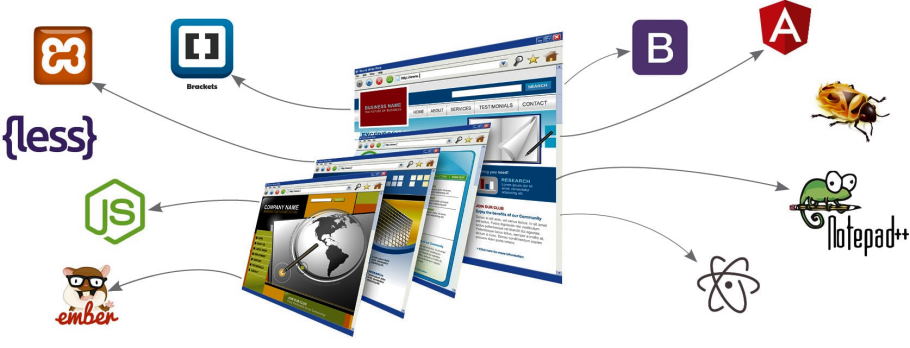Developing a website can be a daunting task. It can be hard to know where to start, what tools to use, and how to make your website look and function the way you want it to. However, there are a number of web development tools that can make the process easier for you. This blog post will explore some of the most useful ones. So without further ado, let’s get started!
Essential web development tools
- A Text Editor
The first tool you’ll need is a text editor. This program allows you to create and edit files containing code, which is the language used to build websites. Many different text editors are available, but we recommend using Atom, which is free and easy to use.
- A Web Browser
A web browser is a program that allows you to view websites. The most popular web browsers are Google Chrome, Mozilla Firefox, and Microsoft Edge. We recommend using Google Chrome because it’s fast and has lots of useful features for developers.

- A Web Server
A web server is a computer that stores website files and makes them accessible to visitors on the internet. You’ll need to install a web server program if you want to run a website on your own computer. We recommend using Apache HTTP Server, which is free and easy to set up.
- A Database
A database is a program that stores data used by websites. You’ll need to use a database to build a website that stores information (such as a blog or e-commerce site). MySQL is the most popular database software, which is free and easy to use.
These are just a few of the many tools available to web developers. Using these tools, you’ll be able to build websites more efficiently and effectively.
Front-end web development tools you can’t live without
As a front-end web developer, there are certain tools that you cannot live without. In this article, we will look at some of the most essential front-end web development tools that every developer should have in their toolkit.
- A code editor
A code editor is perhaps the most important tool for any web developer. It is the one tool you will use daily to write and edit your code. There are many different code editors available, so choosing one that suits your needs and preferences is important. Some popular code editors include Sublime Text, Atom, and Visual Studio Code.
- A CSS preprocessor
A CSS preprocessor is a tool that lets you write more efficient and maintainable CSS code. It is an excellent tool for automating repetitive tasks such as vendor prefixing, spriting, and media queries. The most popular CSS preprocessors are Less and Sass.
- A task runner
A task runner is a tool that automates common development tasks such as minification, compilation, linting, and testing. Grunt and Gulp are two of the most popular task runners available.

- A package manager
A package manager is a tool that helps you manage your project dependencies (libraries and frameworks that your project depends on). It is also a great way to share code with other developers. The two most popular package managers are npm and bower.
- A front-end framework
A front-end framework is a collection of pre-written code that you can use to build your web applications. It can save you time and effort by providing a structure for your code and common tasks such as routing and templating. Some of the most popular front-end frameworks include AngularJS, React, and Vue.js.
- A debugging tool
A debugging tool is a must-have for any web developer. It allows you to inspect your code for bugs and errors and then fix them. The most popular debugging tools are the Chrome Developer Tools and Firefox Developer Tools.
- An HTTP client
An HTTP client is a tool that allows you to make HTTP requests to a server. It is essential for testing your web applications and APIs. Some of the most popular HTTP clients are cURL and Postman.
These are just some essential tools that every front-end web developer should have in their toolkit. While there are many other great tools available, these are the ones that you cannot live without.


